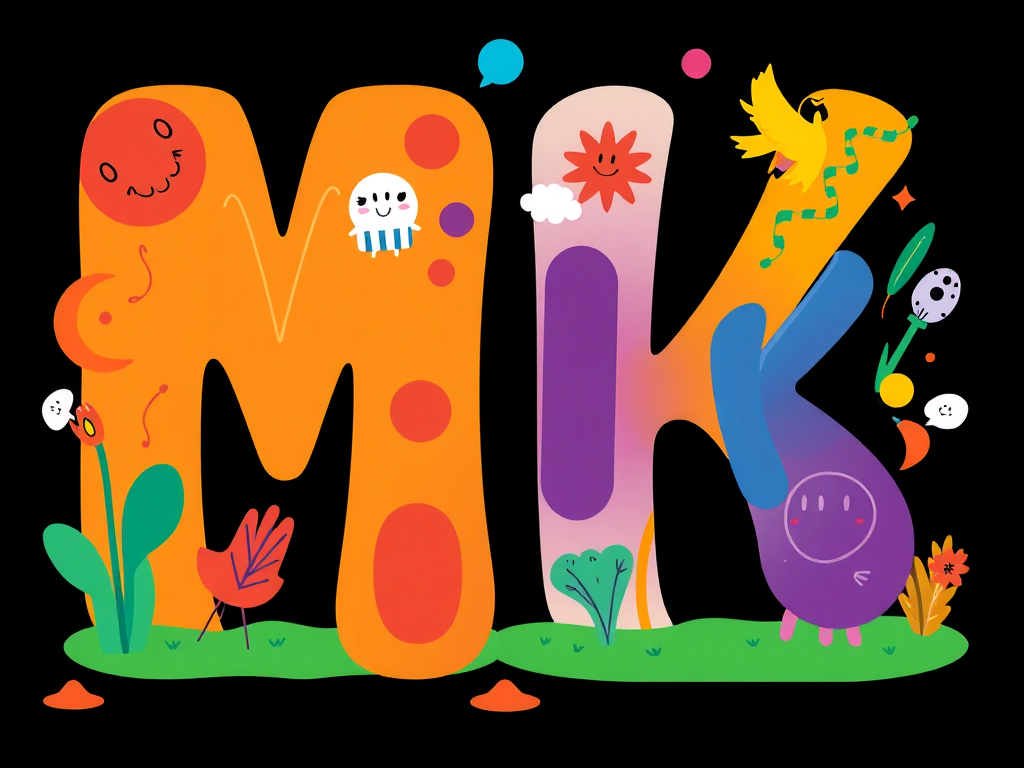In today’s fast-paced digital world, understanding text messaging abbreviations and modern slang has become essential for effective communication. One abbreviation that’s been gaining significant traction across various social media platforms is “MK.” If you’ve ever wondered what does mk mean in text, you’ve come to the right place.
This comprehensive guide will explore everything you need to know about the mk meaning in text, its various uses, and how to navigate this piece of internet slang like a pro. Whether you’re texting on Snapchat, WhatsApp, or any other messaging platform, understanding this texting abbreviation will help you communicate more effectively with friends, family, and peers.
Understanding the Basic MK Meaning in Text
The mk meaning in text messaging is quite straightforward – it stands for “mkay” or “mm, okay,” expressing acknowledgment or agreement, often with a touch of hesitation or subtle judgment. This casual texting language has become increasingly popular among younger generations who prefer quick, efficient communication methods.
The mk text meaning goes beyond a simple “okay” response. When people ask what dose mk mean or waht does mk mean (common misspellings), they’re looking for this nuanced understanding. The presence of “mmm” or “hmm” gives off a skeptical or hesitant vibe versus a regular “okay” or “ok.” In short, it’s an informal way to express agreement but with some reservations.
Breaking Down the Components
When you see mk in text, think of it as:
- M = “mmm” (the thoughtful sound) – mmm meaning in chat represents contemplation
- K = “kay” (short for okay)
This combination creates a nuanced response that can convey multiple emotions and intentions depending on the context of the conversation. What is mk exactly? It’s this phonetic representation of thoughtful agreement.
What Does MK Stand For in Texting
What does mk stand for in texting? The answer lies in understanding the phonetic representation of informal speech patterns. The mk abbreviation represents the sound “mmm-kay,” which people often use in spoken conversation when they want to acknowledge something while expressing mild reservation or contemplation.
When someone searches what does mk stand for in text or what does mk stand for, they’re trying to decode this acronym mk. The mk definition is simple: it’s a shortened form of acknowledging with hesitation. What is an mk in digital terms? It’s an efficient way to express complex emotions in just two characters.
Common Interpretations of MK
The mk slang meaning can vary depending on the situation:
- Neutral Agreement: Simple acknowledgment without strong emotions
- Hesitant Acceptance: Agreeing while having some doubts
- Passive-Aggressive Response: Showing disagreement indirectly
- Thoughtful Consideration: Taking time to process information
The mk def encompasses all these meanings, making it a versatile texting slang term. What does the abbreviation mk mean in your specific context depends on the conversation flow and relationship dynamics.
MK Meaning on Snapchat and Social Media
What does mk mean on snapchat and other social media platforms? The usage remains consistent across different platforms, but the context and frequency may vary. MK is common in casual chats on Snapchat, WhatsApp, and TikTok, showing agreement, hesitation, or neutrality.
When people ask what does mk mean snapchat or search mk meaning snapchat, they’re usually encountering it in quick story replies or chat conversations. The mk meaning in snapchat context is typically more casual and immediate than in other messaging formats.
Platform-Specific Usage
Snapchat: Often used in quick responses to stories or direct messages – what does mk mean on snap is frequently asked Instagram: Appears in comment sections and DMs
TikTok: Used in video comments and private messages WhatsApp: Common in group chats and one-on-one conversations Twitter/X: Less common but still present in replies and DMs – mk twitter usage exists but is minimal
The mk meaning snapchat users understand is typically more casual and friendly compared to other platforms where it might carry more passive-aggressive undertones. What does mk mean on text versus what does mk mean on snap shows platform-specific nuances.
Different Contexts and Tones of MK
MK isn’t just a simple acknowledgment – it can carry different tones depending on how it’s used. Understanding these nuanced meanings is crucial for effective digital communication.
Sincere Agreement
When someone genuinely agrees with a suggestion or statement:
- “Want to grab pizza for dinner?”
- “MK, sounds good!”
Reluctant Acceptance
When agreeing to something you’re not entirely enthusiastic about:
- “We need to clean the garage this weekend.”
- “MK…” (note the ellipsis indicating hesitation)
Passive-Aggressive Response
When you disagree but don’t want to directly confront:
- “You should have told me earlier.”
- “MK.”
Neutral Acknowledgment
Simple recognition without emotional investment:
- “The meeting is at 3 PM.”
- “MK”
How to Use MK in Text Messages Properly
Understanding how to use mk effectively requires considering your relationship with the recipient and the context of your conversation. It’s best for informal use; avoid in professional or serious talks.
Best Practices for Using MK
Do:
- Use with close friends and family
- Apply in casual conversations
- Consider the tone you want to convey
- Follow up with clarification if needed
Don’t:
- Use in professional communications
- Apply in serious or sensitive discussions
- Overuse in single conversations
- Use when genuine enthusiasm is expected
Examples of Proper MK Usage
| Context | Message | MK Response | Interpretation |
|---|---|---|---|
| Friend’s suggestion | “Let’s watch a movie tonight” | “MK, what genre?” | Neutral agreement |
| Parent’s instruction | “Take out the trash” | “MK” | Reluctant compliance |
| Partner’s plan | “I booked dinner for 7 PM” | “MK sounds perfect” | Enthusiastic agreement |
| Coworker’s update | “Meeting moved to tomorrow” | “MK, thanks for letting me know” | Professional acknowledgment |
MK vs. Other Similar Abbreviations
Understanding the differences between mk and other similar texting abbreviations helps you choose the right response for each situation.
Comparison Chart
| Abbreviation | Full Meaning | Tone | Best Used When |
|---|---|---|---|
| MK | Mmm, okay | Hesitant/Neutral | Mild agreement or reluctance |
| OK | Okay | Neutral | Standard acknowledgment |
| K | Okay | Dismissive/Short | Quick responses or irritation |
| KK | Okay, okay | Friendly | Enthusiastic agreement |
| MMK | Mmm, okay | More hesitant | Stronger reservation |
| MKAY | Mmm, okay | Spelled out | Emphasis on hesitation |
When to Choose MK Over Alternatives
Choose mk when you want to:
- Show mild hesitation
- Acknowledge without enthusiasm
- Maintain casual tone
- Express thoughtful consideration
What does m k mean when spaced out? It typically carries the same meaning but may appear more deliberate or thoughtful. The m’kay meaning remains consistent across different spelling variations, whether you see m kay meaning, mkey meaning, or other formats.
Common Misunderstandings About MK
Many people misinterpret the mk meaning in text message contexts, leading to communication breakdowns. Here are the most common misconceptions:
Myth 1: MK Always Means Anger
Reality: While mk can indicate mild irritation, it often simply shows neutral acknowledgment or thoughtful consideration. What mk means depends heavily on context, not just the abbreviation itself.
Myth 2: MK is Rude
Reality: The mk slang isn’t inherently rude – it’s about context and relationship dynamics. What do mk mean varies significantly based on who’s using it and why.
Myth 3: MK and OK Mean the Same Thing
Reality: MK carries more nuanced emotional undertones compared to the straightforward nature of “OK.” What mean mk versus “OK” shows distinct emotional differences.
Myth 4: All Variations Mean the Same
Reality: What do mk mean in text versus what do mmk mean or what do mkay mean shows subtle but important distinctions in emphasis and intensity.
Regional and Generational Differences
The mk meaning can vary significantly based on geographic location and age demographics. Understanding these differences helps prevent miscommunication.
Generational Usage Patterns
Gen Z (Born 1997-2012):
- Most frequent users of mk
- Often use it interchangeably with other abbreviations
- Understand subtle tone differences
Millennials (Born 1981-1996):
- Moderate usage
- More likely to spell out full words
- May miss subtle implications
Gen X and Older:
- Limited usage
- Often confused by the meaning
- Prefer traditional communication methods
Regional Variations
Different regions may interpret mk differently based on local communication patterns and cultural norms. What seems neutral in one area might appear passive-aggressive in another.
Evolution of MK in Digital Communication
The texting slang landscape constantly evolves, and mk has undergone several transformations since its inception. Understanding this evolution helps predict future usage patterns.
Historical Development
Early 2000s: Emergence in instant messaging platforms 2010s: Adoption in smartphone texting 2020s: Integration into social media platforms 2025: Mainstream acceptance across all age groups
Future Predictions
As digital communication continues evolving, mk will likely:
- Become more universally understood
- Develop new contextual meanings
- Integrate with voice-to-text technologies
- Influence other abbreviation formations
Impact on Modern Communication
The rise of mk and similar text abbreviations reflects broader changes in how we communicate digitally. These changes have both positive and negative implications for society.
Positive Impacts
Efficiency: Faster communication with fewer keystrokes Nuance: Subtle emotional expression in digital format Inclusivity: Universal understanding across language barriers Evolution: Natural language development in digital age
Potential Concerns
Misunderstanding: Ambiguous meanings causing confusion Formality Loss: Decreased emphasis on proper grammar Generational Gaps: Communication barriers between age groups Context Dependency: Meanings varying by situation
Best Practices for Interpreting MK
When someone sends you mk, consider these factors for accurate interpretation:
Context Clues to Consider
- Relationship Dynamic: Close friend vs. acquaintance
- Conversation Topic: Casual vs. serious subject matter
- Previous Messages: Tone established in conversation
- Response Timing: Immediate vs. delayed reply
- Additional Elements: Emojis, punctuation, follow-up messages
Response Strategies
If MK Seems Neutral:
- Continue conversation normally
- Provide additional information if needed
- Acknowledge their response
If MK Seems Hesitant:
- Ask for clarification
- Offer alternatives
- Show understanding of their perspective
If MK Seems Dismissive:
- Give them space
- Address underlying issues if appropriate
- Respect their communication style
Cultural Sensitivity and MK Usage
Understanding cultural context when using mk prevents unintended offense or misunderstanding. Different cultures have varying expectations for communication directness and formality.
International Considerations
Direct Communication Cultures: May interpret mk as passive-aggressive Indirect Communication Cultures: May appreciate the subtle nature High-Context Cultures: Better understanding of implied meanings Low-Context Cultures: May prefer explicit communication
Teaching MK to Others
If you’re helping someone understand what mk means in text, consider these educational approaches:
Step-by-Step Explanation
- Start with Basics: Explain the phonetic origin
- Provide Examples: Show different contextual uses
- Practice Together: Use real conversation scenarios
- Discuss Nuances: Explain tone variations
- Cultural Context: Address appropriateness in different situations
Common Learning Challenges
Tone Interpretation: Help them understand subtle differences Context Recognition: Teach situation-appropriate usage Generation Gaps: Bridge understanding between age groups Platform Differences: Explain varying meanings across apps
Future of MK and Digital Slang
As internet slang continues evolving, mk represents just one example of how language adapts to digital communication needs. Understanding these trends helps us prepare for future communication changes.
Emerging Trends
Voice Integration: How mk translates to voice messages AI Communication: Machine understanding of slang meanings Global Standardization: Universal interpretation across cultures New Platforms: Adaptation to emerging social media
Preparing for Change
Stay updated on texting trends by:
- Following social media developments
- Engaging with younger generations
- Observing communication pattern changes
- Adapting to new platform features
Professional Use of MK
While mk is primarily casual internet slang, understanding its professional implications helps maintain appropriate workplace communication.
Workplace Guidelines
Avoid Using MK When:
- Communicating with superiors
- Sending formal emails
- Discussing serious business matters
- Representing company officially
Consider Using MK When:
- Texting close colleagues
- Informal team communications
- Social workplace interactions
- Personal conversations with work friends
Psychological Aspects of MK Usage
The psychology behind choosing mk over other responses reveals interesting insights about human communication preferences and emotional expression.
Emotional Motivations
Conflict Avoidance: Using mk to avoid direct confrontation Emotional Distance: Maintaining space while acknowledging Time Efficiency: Quick responses when busy Social Conformity: Following peer communication patterns
Communication Psychology
Understanding why people choose mk helps improve overall digital communication effectiveness and relationship building in the modern world.
Conclusion
Understanding what does mk mean in text is essential for navigating modern digital communication effectively. This seemingly simple two-letter abbreviation carries complex emotional and contextual meanings that can significantly impact your conversations and relationships.
Whether you encounter mk on snapchat, in text messages, or across other social media platforms, remember that context is key. The mk meaning can range from neutral acknowledgment to passive-aggressive response, depending on the situation, relationship, and cultural background of the communicators involved.
As texting slang continues evolving, staying informed about terms like mk helps you communicate more effectively with people across different generations and social groups. By understanding the nuances of mk abbreviation and similar internet slang, you’ll be better equipped to navigate the complex world of modern digital communication.
Remember to use mk appropriately, considering your audience and context. While it’s perfectly acceptable in casual conversations with friends and family, professional settings typically require more formal communication approaches. As with all slang terms, the key is knowing when and how to use them effectively while maintaining respect and clarity in your communications.
The world of text messaging will continue evolving, and abbreviations like mk will likely develop new meanings and uses. By staying curious and open to these changes, you’ll maintain effective communication skills in our increasingly digital world.

Catherine Frank, founder of BiblicalHorizon.com, shares daily prayers and Bible verses to nurture spiritual growth. With a lifelong passion for scripture and prayer traditions, she creates accessible spiritual content that resonates with both seasoned believers and newcomers seeking divine connection.



